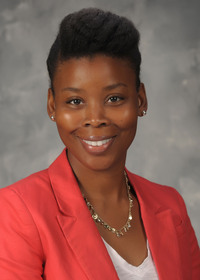Breast Cancer Health Message
What Is Breast Cancer?
Breast cancer is a malignant tumor that starts in the cells of the breast. In its early stages, breast cancer usually has no symptoms. As the tumor develops, common symptoms include changes in the look or feel of the breast, changes in the nipple, or nipple discharge. Breast cancer occurs mainly in women, though men can also get it. However, this information focuses on women. Early detection and improved treatments have steadily decreased death rates.
How Common Is Breast Cancer?
- It is the second most common cancer in women in the United States, after skin cancer.
- It is the second leading cause of cancer-related death in women in the U.S.
- One in eight women will be diagnosed with breast cancer in her lifetime.
- The cause of most breast cancers is unknown, but it’s often linked to changes in the DNA of cells. These changes can be related to lifestyle, age, or other factors.
Lowering the Risk of Breast Cancer
To lower your risk:
- Maintain a healthy weight.
- Be physically active.
- Limit alcohol and tobacco use.
- Breastfeed your babies.
- Avoid hormone therapy for menopause symptoms.
American Cancer Society (ACS) Recommendations for Early Detection
- Women 40 and older should have an annual mammogram and continue as long as they are in good health.
- Women in their 20s and 30s should have a clinical breast exam (CBE) during check-ups every 3 years, and annually after age 40.
- Breast self-exams (BSE) are optional for women starting in their 20s. Any breast changes should be reported to a health professional.
Some women, due to family history or genetics, may need both MRI and mammograms. Talk to your doctor about your history and the need for earlier or additional screening.
Breast Cancer Risk Factors
Risk factors are anything that can increase or decrease the chance of developing breast cancer. Some can be changed, while others cannot. See the table below.
|
Risk Factors |
Comments |
|---|---|
|
Gender |
Being a woman is the main risk factor for developing breast cancer. |
|
Aging |
Breast cancer risk increases as a woman gets older. |
|
Genetic risk factors |
About 5–10 percent of breast cancer cases are thought to be hereditary, caused by gene changes inherited from a parent. |
|
Family history of |
Breast cancer risk is higher among women whose close blood relatives have this disease. |
|
Personal medical history |
A woman with cancer in one breast is three to four times more likely to develop a new cancer in the other breast or in another part of the same breast. |
|
Certain noncancer breast problems can be risk factors. |
|
|
Women who had radiation to the chest for another cancer as a child or young adult are at a much higher risk. |
|
|
Postmenopausal |
Women who use or recently used combined postmenopausal hormone therapy for many years have an increased risk. |
|
DES exposure |
Women who were given DES from the 1940s to the 1960s because it was thought to lower their chances of having a miscarriage. |
|
Recent oral contraceptive use |
Women who take oral contraceptives have a slightly higher risk, but the risk goes down when discontinued. |
|
Race |
Breast cancer risk is higher among white women than African American women; however, African American women are more likely to die of this cancer. |
|
Dense breast tissue |
Women with denser breast tissue (as seen on a mammogram) have more glandular tissue and less fatty tissue and have a higher risk of breast cancer. |
|
Not having children or having them later in life |
Having children after age 30 puts a woman at slightly higher risk. |
|
More menstrual cycles |
Women who started menstruation early or went through menopause late have a slightly higher risk. |
|
Not breastfeeding |
Some studies suggest that breastfeeding may lower breast cancer risk. |
|
Physical activity |
Being more active decreases risk. |
|
Overweight |
Obesity raises the risk of having breast cancer, especially after menopause. |
|
Alcohol use |
Alcohol use is clearly linked to increased risk, and the risk goes up with the amount of alcohol you drink. |
In summary, focus on controlling the risk factors within your control. Maintain a healthy weight, stay physically active, reduce sedentary behavior (such as excessive sitting or watching TV), and limit alcohol intake. Women should have no more than one alcoholic drink per day. For more information, visit the ACS website at www.cancer.org or call 1-800-227-2345.
Publication 3784 (POD-09-24)
Reviewed by Jasmine Harris-Speight, Extension Instructor, Biochemistry, Nutrition, and Health Promotion. Written by Ann Sansing, Extension Instructor (retired), and Bonnie Carew, PhD, Rural Health Program Leader (retired), Food Science, Nutrition, and Health Promotion.
The Mississippi State University Extension Service is working to ensure all web content is accessible to all users. If you need assistance accessing any of our content, please email the webteam or call 662-325-2262.



